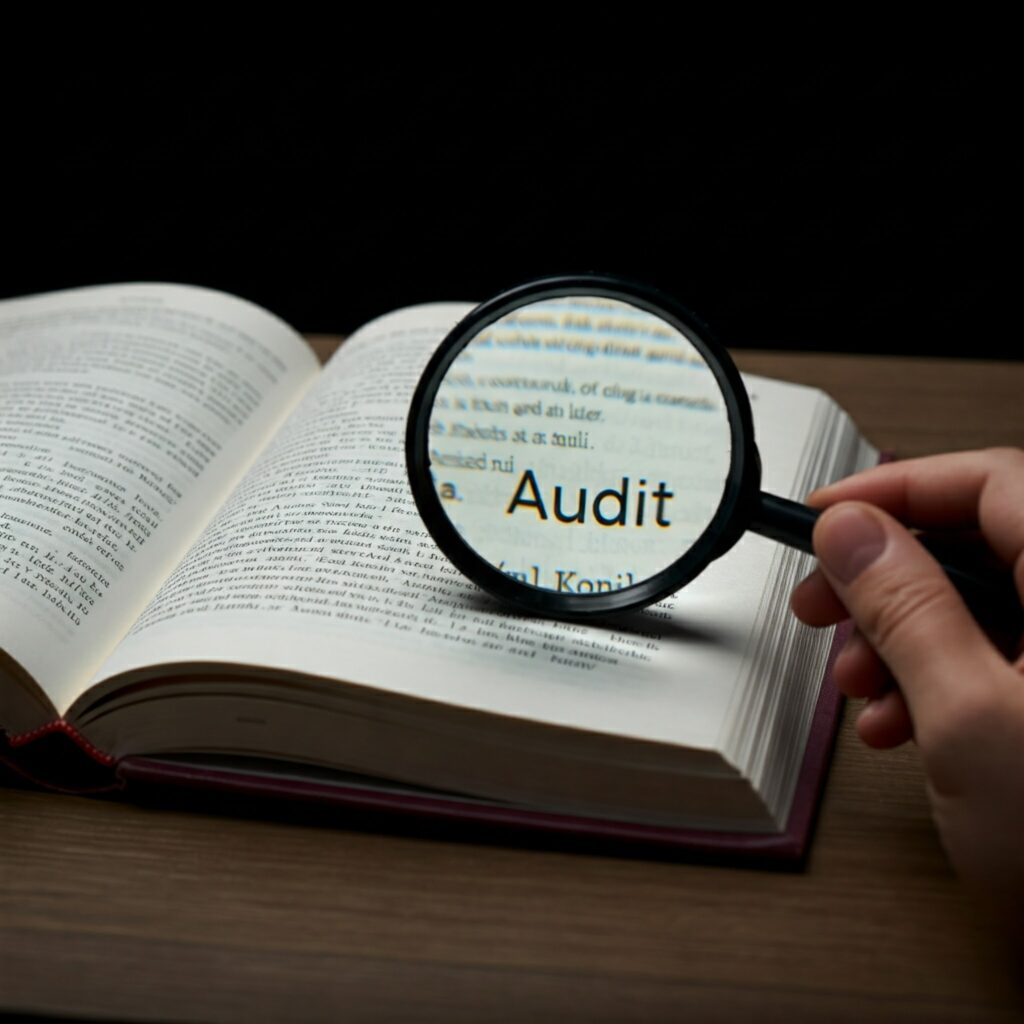Understanding Financial Compliance Regulations: Why They Matter and How to Stay Ahead

In the fast-paced world of finance, staying compliant isn’t just a good practice—it’s a necessity. Financial compliance regulations play a pivotal role in ensuring the security and stability of financial systems. But where do these regulations come from, how do they help protect institutions and consumers, and what steps can organizations take to stay current? What Are Financial Compliance Regulations? Financial compliance regulations are a set of rules and guidelines that financial institutions must follow to ensure transparency, protect consumers, and prevent financial crimes. These regulations often stem from a combination of national laws, international agreements, and industry standards. They address everything from data security and fraud prevention to anti-money laundering (AML) and consumer protection. The Origins of Financial Compliance Regulations The foundation of financial compliance regulations lies in the need to promote trust in the financial system. Historically, major events like the Great Depression, financial scandals, and the 2008 global financial crisis have triggered the creation or enhancement of regulatory frameworks. Agencies such as the U.S. Securities and Exchange Commission (SEC), the Financial Industry Regulatory Authority (FINRA), and global organizations like the Financial Action Task Force (FATF) have developed guidelines to govern financial activities. Examples of key bank compliance regulations include: The Banking Secrecy Act (BSA): Introduced in 1970 to combat money laundering and other financial crimes. The Dodd-Frank Act: Enacted after the 2008 crisis to enhance oversight and consumer protection. General Data Protection Regulation (GDPR): A European Union regulation focusing on data protection and privacy. How Compliance Regulations Protect and Secure Compliance regulations help safeguard financial systems and consumers in several critical ways: Preventing Financial Crimes: Rules like AML and Counter-Terrorism Financing (CTF) requirements make it harder for bad actors to exploit the financial system. Ensuring Consumer Trust: Transparency and accountability measures foster trust between financial institutions and their customers. Promoting Stability: By requiring robust risk management practices, regulations help prevent systemic failures that could destabilize economies. Data Security: Regulations like GDPR and the California Consumer Privacy Act (CCPA) ensure that consumer data is handled securely and responsibly. Keeping Up with Compliance Regulation Changes The dynamic nature of the financial industry means that compliance regulations are continually evolving. Staying up to date is critical to avoiding penalties and maintaining trust. Here are steps financial institutions can take: Monitor Regulatory Updates: Stay informed about changes from key compliance regulators like the SEC, FINRA, and FATF. Subscribing to industry newsletters or working with legal experts can help. Invest in Training: Regular training for employees ensures that everyone is aware of current financial compliance regulations and their responsibilities. Leverage Technology: Compliance software solutions can automate monitoring, reporting, and recordkeeping, making it easier to adapt to regulatory changes. Engage in Audits: Routine internal and external audits help identify gaps in compliance and ensure adherence to regulations. Collaborate: Participating in industry forums and working with peers can provide valuable insights into best practices and upcoming regulatory shifts. Final Thoughts Financial compliance regulations are essential for fostering a secure and trustworthy financial ecosystem. By understanding their origins, appreciating their protective roles, and staying ahead of compliance regulation changes, financial institutions can ensure they not only meet their obligations but also strengthen their reputation. In an ever-changing regulatory landscape, adaptability and vigilance are the keys to long-term success.
What Is a Compliance Audit? Everything You Need to Know

In today’s business landscape, ensuring regulatory compliance isn’t optional—it’s a necessity. One of the key processes for verifying compliance is through an audit. If you’re wondering what a compliance audit is, why it’s conducted, and how to prepare for one, this guide has you covered. Let’s dive in! What Is a Compliance Audit? A compliance audit is a systematic review to ensure that an organization is adhering to laws, regulations, and internal policies. These audits can span various domains, including financial practices, environmental regulations, health and safety protocols, and data privacy standards. A compliance audit report is the primary output, summarizing findings, identifying areas of non-compliance, and offering recommendations for corrective actions. Why Are Compliance Audits Conducted? Compliance audits serve several purposes: Regulatory Requirements: Many industries have mandatory audits to comply with legal and regulatory frameworks. Risk Mitigation: Regular audits help organizations identify and address risks before they escalate. Operational Efficiency: Compliance audits often highlight inefficiencies or outdated practices, leading to process improvements. Reputation Management: A clean compliance audit report builds trust with stakeholders, clients, and regulators. What to Expect During a Compliance Audit A compliance audit generally follows these steps: Planning: The auditor defines the scope, objectives, and timeline of the audit. Document Review: Policies, procedures, and records are examined to ensure they align with compliance requirements. On-Site Inspection: The auditor may visit the organization to observe operations and interview staff. Testing: Random sampling or in-depth reviews are conducted to verify adherence to compliance standards. Audit Report: The findings are documented in a compliance audit report, including any instances of non-compliance and recommendations. Internal vs. External Compliance Audits Understanding the distinction between internal and external compliance audits can help organizations approach them effectively: Internal Audit Conducted by: In-house teams or compliance officers. Purpose: Identify and address issues proactively. Advantages: Greater flexibility, cost-effectiveness, and alignment with company culture. External Audit Conducted by: Independent third-party auditors or regulatory bodies. Purpose: Ensure impartial evaluation and satisfy external requirements. Advantages: Higher credibility and objectivity. How to Prepare for a Compliance Audit Preparation is key to a successful audit. Follow these steps to ensure your organization is ready: Review Relevant Standards: Understand the regulations and standards applicable to your industry. Use Auditing Tools: Leverage software solutions to manage documentation, track compliance, and generate reports. Develop a Compliance Audit Checklist Template: Identify key areas to review, such as: Policies and procedures Training records Transaction documentation Risk management processes Train Employees: Ensure staff understand compliance requirements and their roles in meeting them. Conduct a Mock Audit: Simulate the audit process to identify and resolve potential issues beforehand. The Role of COA The Chart of Accounts (COA) often plays a role in financial compliance audits. Ensuring your COA aligns with regulatory requirements and industry standards can streamline the audit process and prevent financial discrepancies. Final Thoughts Compliance audits are essential for maintaining regulatory adherence and mitigating risks. Whether internal or external, these audits provide valuable insights into your organization’s operations and compliance posture. By using auditing tools, following a comprehensive compliance audit checklist template, and fostering a culture of accountability, you can ensure a smooth and successful audit process. Preparation is your best ally in achieving a favorable audit report—so start today and stay ahead of the curve!
A Comprehensive Guide to Understanding AML Monitoring

If you’ve ever wondered, “What is AML monitoring?” or how it fits into Enhanced Due Diligence (EDD) processes, this guide is for you. Anti-Money Laundering (AML) monitoring is a cornerstone of financial compliance, helping institutions prevent and detect suspicious activities that could indicate money laundering, terrorist financing, or other financial crimes. In this post, we’ll break down AML monitoring, its processes, and its crucial connection to EDD. Let’s dive in! What Is AML Monitoring? At its core, AML monitoring refers to the processes and systems that financial institutions use to identify and report suspicious transactions. This involves: Tracking financial transactions: Using automated and manual systems to keep an eye on the flow of money. Identifying unusual patterns: Highlighting activities that deviate from the norm. Flagging potential risks: Escalating concerns for further investigation when certain criteria are met. How Is AML Monitoring Done? AML monitoring relies on a mix of technology and human oversight. Here are the key components: 1. AML Monitoring Systems Modern AML monitoring systems are software solutions designed to process vast amounts of transactional data in real time. These systems: Analyze transactions against predefined rules and thresholds. Alert compliance teams to potentially suspicious activities. Generate reports for regulatory authorities. 2. Ongoing Monitoring AML A critical aspect of AML efforts is ongoing monitoring. Rather than a one-time check, financial institutions continuously assess customer activities to identify emerging risks. This includes: Regularly updating customer profiles. Monitoring high-risk accounts with enhanced scrutiny. Ensuring compliance with regulatory updates. 3. AML Transaction Monitoring This process involves scrutinizing individual transactions and patterns to identify anomalies. For example: Large cash deposits or withdrawals. Transactions involving high-risk countries. Multiple small transactions designed to avoid reporting thresholds (a tactic known as “structuring”). 4. AML Monitoring Scenarios To improve detection accuracy, AML monitoring systems use predefined scenarios or rules. Common scenarios include: High-risk jurisdictions: Transactions involving countries with weak AML regulations. Unusual transaction volumes: Sudden spikes in account activity. Related accounts: Transfers between accounts that appear to be linked without a clear purpose. How AML Monitoring Relates to Enhanced Due Diligence Enhanced Due Diligence (EDD) involves a deeper level of scrutiny for high-risk customers. While standard due diligence may suffice for low-risk clients, EDD requires: Comprehensive data collection: Gathering additional documentation and verifying customer identities. In-depth risk assessments: Evaluating factors like geography, industry, and transaction patterns. Integration with AML monitoring: EDD findings help fine-tune AML monitoring systems by adding context to customer risk profiles. By linking EDD processes with AML monitoring, financial institutions can: Detect risks more effectively. Ensure compliance with global regulations. Protect themselves from financial crime exposure. The Importance of Proactive AML Monitoring Effective AML monitoring isn’t just about meeting regulatory requirements—it’s also a safeguard against reputational damage and financial losses. By leveraging robust AML monitoring systems and integrating them with EDD practices, institutions can: Stay ahead of evolving threats. Build trust with customers and regulators. Streamline compliance processes. Final Thoughts AML monitoring is a vital component of any financial institution’s compliance strategy. From identifying suspicious transactions to enhancing due diligence efforts, it plays a key role in safeguarding the global financial system. As regulations grow more complex, investing in sophisticated AML monitoring systems and aligning them with EDD practices will be critical for staying compliant and resilient. With a proactive approach to AML monitoring, institutions can not only protect themselves but also contribute to a safer financial ecosystem.
Understanding Geographical Risk: Why Regions Matter and How to Mitigate Risks for Your Business

In an increasingly interconnected world, businesses often find themselves operating across multiple jurisdictions, each with unique opportunities and challenges. One critical factor that can significantly influence the success of such operations is geographical risk. But what exactly is geographical risk, and why should your business care? What Is Geographical Risk? Geographical risk refers to the potential challenges and vulnerabilities that arise from operating in or interacting with specific regions or countries. This risk can stem from a variety of factors, including political instability, economic volatility, regulatory differences, and even natural disasters. In the context of anti-money laundering (AML), geographical risk focuses on how certain jurisdictions may present elevated risks for illicit activities, such as money laundering or financing terrorism. Why Is Geographical Risk Important? Failing to account for geographical risk can lead to severe consequences for businesses, including regulatory penalties, reputational damage, and financial losses. For example: Compliance Failures: Not addressing AML geographic risk can result in non-compliance with regulatory requirements, especially if your organization operates in or deals with AML high-risk countries. Reputation Damage: Being associated with jurisdictions known for high corruption or money laundering activities can tarnish your brand. Operational Challenges: Unforeseen political or economic instability can disrupt supply chains or lead to sudden changes in regulatory requirements. Factors That Influence AML Geographic Risk When assessing country risk rating and identifying high-risk regions, businesses typically consider the following: Regulatory Environment: Jurisdictions with lax AML regulations or enforcement are often categorized as high-risk. Corruption Levels: A high level of corruption can facilitate illicit financial activities. Sanctions and Watchlists: Countries subject to international sanctions or included in high-risk country lists by organizations like the Financial Action Task Force (FATF). Economic Instability: Volatile economies can be breeding grounds for fraud and money laundering. Criminal Activity: Regions with a high prevalence of organized crime or terrorism are inherently riskier. How to Mitigate Geographical Risk While geographical risk cannot be entirely eliminated, businesses can take proactive steps to mitigate it effectively. Here are some strategies: Conduct Thorough Due Diligence Implement robust due diligence processes to assess the AML country risk of every jurisdiction where your business operates or interacts. This includes reviewing a country’s regulatory framework, corruption index, and inclusion on any high-risk country lists. Leverage Technology Advanced technologies, such as AI-driven analytics, can help identify patterns and assess risks associated with specific regions. This can enhance your ability to detect and address AML geographic risk in real-time. Implement Risk-Based Policies Tailor your compliance program to focus more resources on high-risk regions while maintaining baseline monitoring in low-risk areas. For example, transactions from countries with elevated country risk ratings might warrant additional scrutiny. Stay Informed Keep up-to-date with global developments, such as updates to the FATF’s high-risk country list or changes in sanctions policies. Regularly revisiting your risk assessments ensures your strategies remain effective. Engage in Staff Training Educating your team about the nuances of geographical risk, including AML country risk, is crucial. Ensure they understand why regions matter and how they can identify and report red flags. Partner with Experts Sometimes, navigating geographical risk can be complex. Partnering with experts in enhanced due diligence and risk assessment can provide your business with deeper insights and actionable recommendations. Conclusion Geographical risk is a critical aspect of doing business in today’s global landscape. By understanding and addressing the factors that contribute to AML geographic risk, businesses can not only remain compliant but also safeguard their reputation and operations. Mitigating geographical risk may require effort and investment, but the rewards—stability, trust, and long-term success—are well worth it. Understanding the nuances of the regions you operate in is not just a regulatory necessity; it’s a strategic advantage. Take the time to assess and address these risks comprehensively to build a resilient and compliant business.
The Hidden Layers of Due Diligence: What Traditional Methods Miss

In today’s complex business landscape, ensuring compliance and mitigating risk require more than surface-level investigations. Traditional due diligence processes often rely on readily available data, such as financial reports, corporate registries, and public records. While these sources are valuable, they don’t always reveal the full picture. This is where Enhanced Due Diligence (EDD) comes into play, diving deeper to uncover hidden risks and insights that might otherwise go unnoticed. The Gaps in Traditional Due Diligence Standard due diligence aims to verify the basic legitimacy of an individual or entity. However, in many cases, this approach leaves blind spots, including: Complex Ownership Structures: Traditional methods may not fully unravel multi-layered corporate hierarchies, leaving the ultimate beneficial owner (UBO) obscured. Geopolitical Risks: Surface-level checks often fail to account for exposure to high-risk regions or politically exposed persons (PEPs). Behavioral Red Flags: Patterns of suspicious activity, such as inconsistent financial transactions or sudden changes in business practices, can go unnoticed. When these gaps exist, organizations risk associating with entities that could damage their reputation or lead to legal and regulatory consequences. What Enhanced Due Diligence Offers Enhanced Due Diligence goes beyond traditional checks by incorporating a wider range of data sources and advanced analytical tools. Key components of EDD include: Deep Data Collection: EDD gathers information from hard-to-access sources, such as local language media, litigation records, and even social networks. Network Analysis: It maps connections between entities, revealing hidden relationships and potential conflicts of interest. Continuous Monitoring: Unlike static reports, EDD often includes ongoing surveillance to detect new risks as they emerge. The Role of AI in Enhanced Due Diligence One of the most significant advancements in EDD is the integration of artificial intelligence. AI-powered tools can process vast amounts of data quickly and accurately, uncovering patterns and anomalies that human analysts might miss. Here’s how AI enhances EDD: Speed and Scalability: AI can analyze millions of data points in minutes, providing actionable insights without the delays of manual processes. Language Processing: Natural Language Processing (NLP) enables AI to extract relevant information from unstructured text in multiple languages, a critical feature for global investigations. Risk Scoring: Machine learning models can generate risk scores based on predefined criteria, helping organizations prioritize their investigations. Real-World Impacts Enhanced Due Diligence, supported by AI, has tangible benefits for organizations: Avoiding Regulatory Penalties: By identifying compliance risks early, businesses can address them before they escalate into costly fines or legal battles. Protecting Reputation: Thorough due diligence safeguards against associations with unethical or illegal activities, preserving stakeholder trust. Making Informed Decisions: With deeper insights, organizations can confidently pursue partnerships, investments, and other opportunities. Moving Beyond the Surface In an era of increasing regulatory scrutiny and complex risks, businesses can no longer afford to rely solely on traditional due diligence. Enhanced Due Diligence, bolstered by AI, provides the depth and precision needed to navigate today’s challenges. By adopting these advanced methods, organizations not only protect themselves but also position their operations for sustainable growth.
Demystifying Politically Exposed Persons (PEPs): What You Need to Know

In the world of compliance, few terms are as significant yet misunderstood as Politically Exposed Persons (PEPs). Identifying and managing PEP-related risks is a crucial part of due diligence processes, especially in industries like finance, real estate, and corporate governance. This guide will help you understand who PEPs are, why they matter, and how to effectively manage the associated risks. Who Are Politically Exposed Persons (PEPs)? A Politically Exposed Person is someone who holds, or has held, a prominent public position that makes them more susceptible to risks like bribery, corruption, or money laundering. PEPs can include: Heads of state, government officials, and high-ranking military officers Members of parliament or legislative bodies Judges and senior judicial officials Executives of state-owned enterprises Family members or close associates of these individuals PEP status is not necessarily an indication of wrongdoing, but it signals a higher risk profile due to their influence and access to resources. Why Do PEPs Matter in Compliance? 1. Increased Risk Exposure: PEPs often have access to public funds and policymaking, making them targets for corruption or illicit activities. 2. Regulatory Requirements: Many jurisdictions mandate enhanced due diligence (EDD) for PEPs under anti-money laundering (AML) and counter-terrorism financing (CTF) regulations. Non-compliance can result in hefty fines and reputational damage. 3. Reputational Impact: Engaging with a PEP linked to corruption or financial crime can harm an organization’s credibility and stakeholder trust. Types of PEPs PEPs are typically categorized based on their roles and proximity to public power: Domestic PEPs: Individuals holding prominent positions in their home country. Foreign PEPs: Individuals with similar roles in foreign governments or organizations. International PEPs: Those connected to international organizations like the United Nations or World Bank. Close Associates and Family Members: Spouses, children, business partners, and others linked to PEPs. How to Identify PEPs 1. Conduct Comprehensive Background Checks: Leverage global databases and lists that identify PEPs and their associates. 2. Use Technology: AI-powered tools with Natural Language Processing (NLP) can scan news, public records, and databases to identify PEP connections and risks in real time. 3. Ask Directly: During customer onboarding, include questions about political affiliations or connections as part of your Know Your Customer (KYC) process. Managing Risks Associated with PEPs 1. Apply Enhanced Due Diligence (EDD): Verify the source of funds and wealth. Scrutinize transactions for anomalies or high-risk patterns. 2. Monitor Continuously: Regularly update PEP status and monitor for changes in their risk profile. Use real-time monitoring tools to stay ahead of emerging risks. 3. Establish a Risk-Based Approach: Not all PEPs pose the same level of risk. Tailor your due diligence efforts based on their role, influence, and geography. 4. Maintain Clear Documentation: Record all steps taken to identify and mitigate PEP-related risks. This is critical for demonstrating compliance during audits or investigations. Common Challenges in Managing PEP Risks False Positives: Automated systems can flag individuals incorrectly, leading to wasted resources. Data Gaps: Incomplete or outdated information can hinder accurate risk assessment. Evolving Regulations: Staying compliant with varying global standards can be challenging for multinational organizations. How AI Simplifies PEP Risk Management AI-powered compliance tools address many of these challenges by: Reducing False Positives: Machine learning algorithms refine results for higher accuracy. Providing Global Coverage: Accessing and analyzing data from multiple languages and jurisdictions. Ensuring Scalability: Handling increasing volumes of data as regulations and risks evolve. Conclusion Managing PEP-related risks is a cornerstone of modern compliance efforts. By understanding who PEPs are, why they matter, and leveraging advanced tools and strategies, organizations can effectively mitigate these risks while staying compliant with global regulations.
Understanding Industry Risk in Enhanced Due Diligence (EDD)

In the world of Enhanced Due Diligence (EDD), understanding industry risk is critical. Certain industries inherently carry more risk due to regulatory scrutiny, susceptibility to money laundering, or historical associations with illicit activities. However, not all high-risk industries pose an equal threat to your business. By effectively assessing and managing industry risks, you can safely onboard customers while complying with regulatory expectations. What Are High-Risk Industries? High-risk industries (or high-risk sectors) are industries more likely to be involved in activities that could compromise financial institutions or businesses, such as money laundering, fraud, or terrorism financing. These industries often include: 1. Casinos and gambling establishments 2. Real estate (particularly international transactions) 3. Cryptocurrency businesses 4. Weapons and arms dealers 5. Precious metals and jewelry 6. Cannabis businesses (in regions where it’s legal but highly regulated) This list of high-risk business industries is not exhaustive but highlights sectors commonly flagged for scrutiny by regulators such as the Financial Action Task Force (FATF). Why Industry Risk Matters for EDD? EDD focuses on understanding the complete risk profile of a customer. Knowing the industry a customer operates in can help you: 1. Identify potential red flags early in the onboarding process. 2. Ensure compliance with Anti-Money Laundering (AML) and Know Your Customer (KYC) regulations. 3. Minimize exposure to reputational and financial risks. For example, a cryptocurrency exchange might pose a greater money laundering risk than a local retail business. However, if proper safeguards are in place, the actual risk to your business may be manageable. Regional Variations in Industry Risk The perception of industry risk varies significantly by region. For instance: – Cryptocurrency businesses are high-risk in countries with minimal regulatory frameworks, while in regions with strong regulations, they might be medium-risk. – Cannabis businesses are legal and regulated in many U.S. states, but they remain federally restricted, complicating risk assessments. When onboarding customers, understanding the geographical context of their operations is crucial for accurate risk categorization. How to Safely Onboard High-Risk Customers? Successfully onboarding high-risk customers requires a combination of diligence and robust processes: 1. Enhanced Screening: Use advanced tools to check against sanctions lists, adverse media, and industry-specific red flags. 2. Continuous Monitoring: Even after onboarding, high-risk customers require ongoing checks for changes in behavior or ownership structures. 3. Transparent Documentation: Maintain thorough records of risk assessments and the steps taken to mitigate risks. Why High-Risk Industries May Not Be High Risk for You Not every high-risk business inherently poses a large threat. For instance: – A real estate developer working solely in regulated, transparent markets might present minimal risk. – Jewelry retailers with strict compliance policies and clear supply chain transparency might be less of a concern. Your ability to understand the nuances of an industry and implement customer-specific controls will determine the real risk level to your business. Conclusion Industry risk is a fundamental element of Enhanced Due Diligence. By tailoring your approach to specific industries and regions, you can onboard customers safely without compromising your compliance obligations. Remember, not all high-risk sectors are equally risky; the key lies in understanding the specific context of your customers and their industries.
Understanding UBO’s

In the complex world of financial transparency and compliance, understanding the concept of a UBO (Ultimate Beneficial Owner) is essential. Whether you’re managing compliance for a multinational company or working in financial services, identifying and verifying UBOs is a key step in preventing financial crime, ensuring regulatory compliance, and protecting your business reputation. This article breaks down UBO meaning, why UBO screening matters, how to find and verify them, and the red flags to watch for. What Is a UBO? The Ultimate Beneficial Owner (UBO) is the person who ultimately owns or controls an entity, regardless of any layers of intermediaries or legal structures. These individuals reap the benefits of ownership, whether that’s through profit-sharing or decision-making power, and are often hidden behind corporate veils. Understanding the AML beneficial owner concept is critical because criminals can exploit complex ownership structures to obscure illicit activities. Why Are UBO’s Important to Screen? Uncovering the KYC beneficial owner is central to Anti-Money Laundering (AML) and Know Your Customer (KYC) practices. Regulatory frameworks worldwide, including FATF recommendations and the EU AML directives, mandate identifying and verifying UBOs to: Prevent money laundering and terrorist financing. Avoid financial penalties for non-compliance. Protect your organization from reputational damage. Failing to conduct proper UBO registry checks can result in hefty fines, legal consequences, and exposure to bad actors. How to Find a UBO Finding a UBO requires thorough due diligence. Here are some key steps: Access Public Registers: Many jurisdictions maintain UBO registries where companies must declare their ultimate beneficial owners. These can be a valuable starting point. Review Corporate Documentation: Scrutinize shareholding structures, organizational charts, and legal documents to trace ownership. Use Technology and Databases: Advanced AI tools and commercial databases can help identify UBOs by linking data points across jurisdictions and entities. How to Verify UBO Data Once identified, it’s crucial to verify the AML beneficial owner information. Here’s how: Cross-Check Multiple Sources: Validate information against public records, financial disclosures, and official ID documents. Monitor for Changes: UBO’s can change due to restructuring or new ownership. Regular checks help maintain compliance. Conduct Enhanced Due Diligence: For higher-risk entities, dive deeper into their ownership structures, especially in jurisdictions with weak UBO disclosure laws. Red Flags When Identifying UBOs Be alert to these red flags when screening for UBOs: Complex Ownership Chains: Layers of entities across multiple jurisdictions could indicate attempts to obscure ownership. Offshore Companies: Businesses registered in tax havens may hide UBO’s involved in illicit activities. Inconsistent or Missing Information: Discrepancies in corporate documents or resistance to providing UBO details are red flags. Connections to PEP’s: Politically exposed persons (PEP’s) as UBO’s may pose higher risks of corruption. Conclusion Screening and verifying UBO’s is a cornerstone of modern compliance practices. By leveraging UBO registries, conducting diligent checks, and watching for red flags, businesses can protect themselves against financial crime and ensure regulatory adherence. In the fight for financial transparency, understanding the KYC beneficial owner is more than a box-checking exercise—it’s a commitment to integrity.
Sanction Lists: A Guide for Enhanced Due Diligence

Sanction lists are essential tools for businesses navigating the complexities of modern compliance. For organizations conducting Enhanced Due Diligence (EDD), understanding these lists and their implications is vital—not just for meeting regulatory requirements but also for safeguarding business reputation. In this post, we’ll explore what sanction lists are, where to find them, why they matter, and how to effectively screen individuals, businesses, and even entire countries. What Are Sanction Lists? Sanction lists are databases compiled by governments and international bodies to restrict dealings with individuals, organizations, and nations involved in activities like terrorism, human rights abuses, or corruption. One well-known example is the OFAC sanctions list, maintained by the U.S. Office of Foreign Assets Control. This list includes individuals, groups, and countries subject to economic and trade restrictions. Similar lists are maintained by entities such as the United Nations, the European Union, and other national governments. In some cases there are lists of sanctioned countries, in which most types of businesses can not be conducted. It’s crucial to keep up to date with these lists and to know which ones could impact your business. Why Are Sanction Lists Important for EDD? Ignoring sanction lists can lead to severe consequences, including: Legal Risks: Engaging with sanctioned entities can result in heavy fines and reputational damage. Business Disruption: Violating sanctions may lead to frozen transactions and regulatory scrutiny. Reputation Damage: Partnering with blacklisted entities can harm trust with stakeholders and customers. Enhanced Due Diligence ensures businesses identify potential risks before they escalate, making sanction screening a cornerstone of compliance programs. Where to Find Sanction Lists Key sanction lists include: OFAC Sanctions List: Managed by the Office of Foreign Assets Control (OFAC) in the U.S. UN Sanctions List: Maintained by the United Nations Security Council. EU Consolidated List of Sanctions: Covers restrictions by the European Union. UK Sanctions List: Updated by the UK government’s Office of Financial Sanctions Implementation. Many governments also publish their own lists, so businesses operating internationally must be aware of region-specific regulations. How to Screen and Monitor Sanctioned Entities Screening sanctioned entities involves several steps: Automated Screening Tools: Use compliance platforms to cross-check names, businesses, or countries against sanction databases in real-time. Risk Assessment: Evaluate the risks associated with high-risk regions or industries. Ongoing Monitoring: Sanction lists are frequently updated, so continuous monitoring is essential as ever. Record-Keeping: Document every check for audit and regulatory purposes. Options for Sanction Screening Internal Processes: Build in-house compliance teams to manually review and analyze entities. Third-Party Solutions: Engage external providers that specialize in automated EDD and sanction screening. Hybrid Approach: Combine internal expertise with advanced AI tools to enhance efficiency. A Proactive Approach to Compliance Sanction lists are more than a regulatory checkbox—they are critical for protecting your business and reputation. By understanding lists like the OFAC sanctions list and integrating effective screening tools, organizations can ensure compliance while building trust with stakeholders. Staying proactive in your approach to EDD not only safeguards against legal and reputational risks but also creates a strong foundation for sustainable growth.
What Is a Politically Exposed Person (PEP), and Why Does It Matter?

In the world of compliance, due diligence, and risk management, the term Politically Exposed Person (PEP) is more than just jargon—it’s a critical concept for preventing financial crime. Whether you’re a financial institution, a business owner, or a compliance officer, understanding what a PEP is, why it matters, and how to identify them is essential. Let’s break it down. Politically Exposed Person Definition A Politically Exposed Person (PEP) is an individual who holds a prominent public position or has close ties to someone in such a position. Examples include government officials, senior politicians, high-ranking military officers, or executives of state-owned enterprises. Importantly, even family members and close associates of these individuals can be considered PEPs. The reason PEPs are significant in the compliance world is that they pose a higher risk of being involved in activities such as bribery, corruption, or money laundering due to their influence and access to state resources. Why Does Identifying PEPs Matter? Failing to identify and appropriately handle PEPs exposes organizations to serious risks: Reputational Damage: Associations with illicit activities involving a PEP can harm an organization’s credibility. Regulatory Penalties: Non-compliance with PEP anti-money laundering regulations can result in hefty fines. Financial Risks: PEPs may misuse their power to launder funds, exposing financial institutions to significant losses. Regulators worldwide require enhanced due diligence when dealing with PEPs. Screening for PEPs as part of your KYC (Know Your Customer) process is not optional—it’s a critical layer of protection. How to Identify a PEP Identifying PEPs isn’t always straightforward, but a combination of tools and techniques can help. Use a Politically Exposed Person List Many organizations and governments maintain updated politically exposed person lists. These lists help compliance teams flag individuals who meet PEP criteria. Some widely used lists include databases from regulatory bodies, international organizations, and private compliance platforms. Screening Tools and Software Automated screening tools that integrate with PEP KYC processes are invaluable. These tools cross-reference client data with PEP databases to ensure no high-risk individuals slip through. Manual Research In addition to automated tools, manual research may be required to confirm someone’s status as a PEP, especially in jurisdictions where PEP lists are incomplete. Resources for Screening PEPs Here are some popular resources for PEP screening: World-Check: A database of high-risk individuals and entities, including PEPs. Dow Jones Risk & Compliance: A comprehensive database for due diligence. National or Regional PEP Lists: Many countries maintain their own lists, which can be valuable for local compliance. OFAC and Sanctions Lists: While primarily focused on sanctions, these lists often overlap with PEP screening needs. When choosing a resource, ensure it’s updated regularly to capture any newly designated PEPs. Mitigating Risks When Dealing with PEPs After identifying a PEP, organizations should take steps to mitigate risks: Enhanced Due Diligence (EDD): Investigate the source of funds, transactions, and the PEP’s business relationships. Ongoing Monitoring: Regularly update PEP checks to ensure continuous compliance. Escalate Suspicious Activity: If you notice red flags, report them immediately to the appropriate regulatory authority. Conclusion Understanding and managing PEPs is a cornerstone of an effective compliance program. With the right tools, resources, and vigilance, organizations can protect themselves from financial crime and regulatory penalties. As the world becomes more interconnected, staying ahead in identifying and mitigating risks associated with PEPs is non-negotiable.
